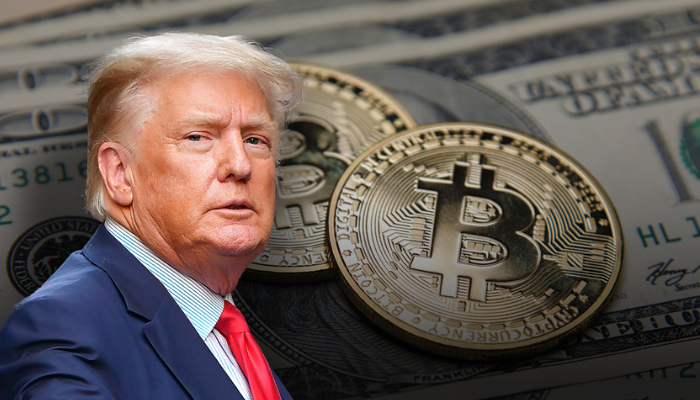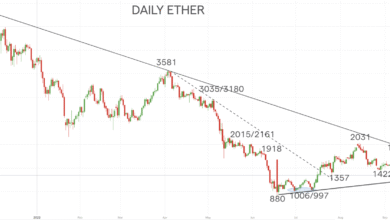Trump Administration Crypto Policy: A New Era for Digital Assets

The Trump Administration Crypto Policy signifies a pivotal moment for the U.S. as it embraces the burgeoning world of digital assets. Under the leadership of Treasury Secretary Scott Bessent, the administration aims to revitalize the sector, with a keen emphasis on stablecoins that are pegged to the U.S. dollar. This approach is expected to bolster demand for U.S. Treasury bonds, creating a solid foundation for a reliable financial ecosystem. Bessent argues that regulatory clarity is crucial for digital asset companies, advocating for legislative measures such as the GENIUS Act to ensure effective oversight of new financial instruments. As the cryptocurrency landscape evolves, the Trump Administration’s policy marks a shift towards harnessing the full potential of crypto regulation to drive economic growth and stability.
The recent initiatives by the Trump administration regarding cryptocurrency regulations have sparked renewed interest in the management of digital currencies and tokens. This strategic focus on electronic financial assets aims to establish a clearer framework for operations in the ever-changing sector of blockchain technology. Treasury Secretary Scott Bessent emphasizes the importance of legislation like the GENIUS Act, which aims to provide stability and oversight, particularly for stablecoins linked to traditional currencies. By promoting a supportive environment for digital finance, the U.S. seeks to maintain its competitive edge in a global market increasingly dominated by various forms of digital money. As these developments unfold, the future of financial innovation in America appears poised for significant transformation.
The Trump Administration Crypto Policy: A New Era for Digital Assets
Under the leadership of Treasury Secretary Scott Bessent, the Trump Administration is making significant strides towards establishing a comprehensive crypto policy that revitalizes the U.S. position as a leader in digital assets. Bessent’s assertion that the administration is ‘going big on digital assets’ highlights a commitment to embracing technological advancements rather than shying away from them. This policy shift could mark a turning point, particularly for stablecoins, which are fundamentally designed to tether digital currencies to the U.S. dollar. By supporting stablecoin innovation, the administration aims to stimulate the growth and acceptance of digital assets within the broader economy.
Moreover, the focus on stablecoins is not solely a matter of preference; it is also a strategic imperative. Bessent has pointed out that these digital tokens could enhance demand for U.S. Treasury bonds, thereby solidifying the connection between cryptocurrency and traditional financial instruments. Such alignment could lead to a robust ecosystem where digital assets contribute to financial stability while also promoting the dollar’s status as a global reserve currency. This forward-thinking approach signals a departure from the previous administration’s regulatory stifling, where innovation was often met with constraints rather than encouragement.
The GENIUS Act and Its Impact on Stablecoins
The introduction of the Guaranteed Essential Neutral and Interoperable Uniform Stablecoin (GENIUS) Act represents a pivotal step in American crypto regulation. Bessent emphasized that this legislation is designed to bring regulatory clarity to stablecoins, which many in the industry view as essential for fostering innovation and investment. By placing stablecoins under clear regulatory oversight, the GENIUS Act aims to not only protect consumers but also legitimize the sector, signaling that the U.S. is open for business in the world of digital assets. The focus on stablecoins is particularly important, as they provide a bridge between traditional finance and the burgeoning field of cryptocurrencies.
Notably, the expected increase in demand for U.S. Treasury bonds driven by stablecoins paints an optimistic picture for the financial markets. Estimates suggest that stablecoins could generate as much as $2 trillion in new interest for U.S. treasuries and treasury bills in the short term. By connecting stablecoins with government securities, the Trump Administration is establishing a framework that promotes both innovation in digital currency and the vitality of the U.S. financial system. As such, the GENIUS Act is positioned not just as a regulatory measure, but as a catalyst for the U.S. economy, encouraging investment while ensuring regulatory compliance.
U.S. Treasury Bonds: The Backbone of Digital Asset Growth
As the Trump Administration shifts its focus toward digital assets, U.S. Treasury bonds emerge as an integral aspect of this evolution. The administration views stablecoins as more than mere digital tokens; they are crucial instruments that can drive liquidity and demand for government securities. By firmly linking stablecoins with U.S. Treasury bonds, Bessent and his team are taking steps to ensure that the financial innovations foster a greater investment in public debt, which is vital for government funding and economic growth.
The interplay between stablecoins and U.S. Treasury bonds is indicative of a larger strategy aimed at leveraging the strengths of both traditional and digital finance. As stablecoins gain traction in the market, they will likely play a significant role in attracting more investors to U.S. Treasury offerings, thereby enhancing their liquidity. This scenario not only positions the bonds as a safe investment vehicle but also integrates them into the rapidly changing financial technology landscape, creating opportunities for both crypto investors and traditional bondholders.
Reversing the Anti-Innovation Agenda of the Past Administration
Treasury Secretary Scott Bessent’s remarks about the Trump Administration’s commitment to digital assets can also be seen as a direct critique of the previous administration’s approach, which many believed stifled crypto innovation. He pointed out that by almost ‘starving’ the crypto industry, previous policies forced many firms to relocate their operations abroad. This led to a significant gap in technological advancement and investment opportunities in the U.S. By focusing on establishing a clear regulatory framework, the current administration aims to reverse this trend and reclaim the U.S. as a leading destination for digital asset innovation.
The clear intent is to create a regulatory environment conducive to growth and development in the crypto sector, positioning U.S. markets as hubs of financial technology. Bessent’s strategy includes encouraging American companies to innovate within the borders of the country by providing the support and framework they need to thrive. By promoting a positive narrative about digital assets, the Trump Administration seeks to instill confidence among investors and industry stakeholders, creating a vibrant ecosystem where innovative financial solutions can flourish.
Future Prospects of Digital Assets in the U.S. Economy
Looking ahead, the prospects for digital assets in the U.S. economy appear promising, especially under the newly shaped policies championed by the Trump Administration. The combination of regulatory clarity through the GENIUS Act and the emphasis on stablecoins places the U.S. in a prime position to capitalize on the ongoing global crypto evolution. Bessent’s vision aims not only to foster innovation but also to align these advancements with the monetary policy objectives of the United States, ensuring that digital assets enhance economic stability.
As more companies look to participate in the digital asset space, the potential for economic growth is substantial. The administration’s focus creates an environment ripe for investment and development, where stablecoins can become mainstream. This trajectory could ultimately lead to a convergence of traditional finance and digital technologies, resulting in a more resilient and forward-looking U.S. economy that embraces innovation as a core value.
Balancing Innovation with Regulatory Oversight
A crucial element of the Trump Administration’s crypto policy involves finding the right balance between fostering innovation and ensuring thorough regulatory oversight. With the whirlwind development of digital assets like stablecoins, creating a framework that protects consumers while promoting growth is imperative. Bessent’s commitment to regulatory clarity aims to provide the necessary structure for companies to operate within the bounds of U.S. law, thereby minimizing the risk of fraudulent activities and financial instability in the crypto market.
The introduction of the GENIUS Act illustrates this balance—offering beneficial regulations for stablecoins without stifling their innovative potential. By establishing clear guidelines that govern the operational aspects of digital assets, the administration is sending a signal to the industry that compliance and innovation can coexist. This is not only vital for the long-term sustainability of the crypto ecosystem but also ensures that the benefits of technology can be harnessed responsibly, thereby unlocking new economic opportunities for businesses and consumers alike.
The Role of Financial Institutions in the Evolving Crypto Landscape
As digital assets gain traction in the U.S. economy, financial institutions will need to adapt to the evolving landscape or risk being left behind. The Trump Administration’s focus on creating a robust framework for digital assets, particularly stablecoins, places an emphasis on the role that banks and other financial stakeholders will play in this transformation. For stablecoins to thrive, collaboration and integration with traditional financial institutions will be paramount, as they will act as crucial players in facilitating transactions, providing liquidity, and ensuring compliance with regulatory requirements.
In this context, banks that proactively engage with the crypto market and develop products that incorporate digital assets will position themselves advantageously in a competitive field. As the landscape shifts—and with the GENIUS Act potentially solidifying regulatory clarity—financial institutions can explore innovative partnerships that leverage the strengths of both fiat and cryptocurrencies. Embracing this change not only allows financial firms to enhance their service offerings but also paves the way for a seamless transition into the digital era of finance.
Market Trends: The Momentum of Digital Assets
The resurgence of interest in digital assets can be attributed to several market trends that are influencing the financial landscape. With the Trump Administration’s commitment to creating a favorable environment for digital currencies, many industry experts believe that we are on the cusp of a major turnaround. The stabilization provided by regulatory clarity, particularly through initiatives like the GENIUS Act, invites both consumer confidence and institutional investment in cryptocurrencies, signaling a shift toward widespread acceptance.
As stablecoins become mainstream, they are expected to reshape payment systems and digital transaction processes, boosting overall market liquidity. The anticipated demand for U.S. Treasury bonds, spurred by an influx of capital from stablecoin investments, will further underscore the interconnectedness of these two financial realms. Overall, the burgeoning market trends associated with digital assets suggest a promising future that aligns with the national interest of fostering economic growth and technological innovation.
A Call for Clarity: Navigating the Regulatory Terrain
As the landscape of digital assets continues to develop, a critical call for clarity emerges within the regulatory terrain. Treasury Secretary Bessent has emphasized the need for clear regulations that empower businesses rather than hinder their growth. The Trump Administration’s approach seeks to clarify the operational framework for crypto companies, especially concerning stablecoins, which are likely to become a significant component of the digital economy. This push for clarity is essential in attracting new players to the market and encouraging existing firms to expand their offerings.
Navigating the complexities of compliance will be crucial for digital asset firms moving forward. The regulations set forth by the GENIUS Act aim to provide a comprehensive guideline that balances innovation with necessary oversight, alleviating concerns surrounding money laundering and consumer protection. As the adminstration lays the groundwork for these regulations, businesses that stay ahead of compliance can capitalize on the opportunities shaping the future of the financial system.
Frequently Asked Questions
What is the Trump Administration’s approach to crypto regulation regarding digital assets?
The Trump Administration, under Treasury Secretary Scott Bessent, is actively promoting a robust crypto regulation framework aimed at digital assets. This approach emphasizes regulatory clarity for crypto tokens, particularly stablecoins, which are designed to be tied to the U.S. dollar.
How does the GENIUS Act relate to the Trump Administration’s crypto policy?
The Guaranteed Essential Neutral and Interoperable Uniform Stablecoins (GENIUS) Act is a key component of the Trump Administration’s crypto policy. It aims to regulate stablecoins and provide a clear framework to ensure compliance with U.S. regulatory and anti-money laundering standards, ultimately fostering innovation in the digital asset space.
What role do stablecoins play in the Trump Administration’s financial strategy?
Stablecoins are seen as a pivotal part of the Trump Administration’s strategy to drive demand for U.S. Treasury bonds. Secretary Bessent estimates that stablecoins could generate up to $2 trillion in demand for these bonds, thereby reinforcing their importance in U.S. monetary policy.
How did the Trump Administration’s crypto policy differ from the previous administration’s approach?
The Trump Administration’s crypto policy contrasts sharply with the previous administration’s approach, which has been criticized for its anti-innovation stance and regulation-by-enforcement strategy. Bessent argued that the new administration prioritizes digital assets, seeking to revitalize the sector that was allegedly neglected by previous policies.
Why does the Trump Administration focus on regulatory clarity for digital asset companies?
The Trump Administration prioritizes regulatory clarity for digital asset companies to establish the U.S. as a premier destination for innovation in the crypto space. By creating a clear regulatory environment, particularly for stablecoins, the administration aims to enhance the competitiveness and attractiveness of the U.S. market for digital assets.
What potential impacts could the Trump Administration’s crypto policy have on the U.S. economy?
The Trump Administration’s focus on digital assets and stablecoins could potentially increase investment in U.S. Treasury bonds, enhance financial innovation, and position the U.S. dollar as a dominant force in global digital transactions. This may lead to economic growth and stability in a rapidly evolving financial landscape.
What is the significance of the Trump Administration’s commitment to digital assets?
The Trump Administration’s commitment to digital assets signifies a shift toward embracing financial innovation as a critical national interest. By prioritizing crypto regulation and supporting the development of stablecoins, the administration seeks to strengthen the U.S. economy and ensure its leadership in the global financial system.
| Key Aspect | Details |
|---|---|
| Trump Administration’s Stance | Treasury Secretary Scott Bessent emphasizes strong commitment to digital assets, focusing on stablecoins. |
| Critique of Previous Administration | Bessent claims the previous administration had an anti-innovation agenda that harmed the crypto industry. |
| Regulatory Clarity | Digital asset companies seek clearer regulations, starting with the proposed GENIUS Act for stablecoins. |
| Potential Demand for U.S. Bonds | Stablecoins could generate $2 trillion in demand for U.S. Treasury bonds, according to Bessent. |
| National Strategy | The administration aims to reclaim financial innovation and ensure U.S. dominance in digital assets. |
Summary
The Trump Administration Crypto Policy marks a significant shift towards embracing digital assets, driven by Treasury Secretary Scott Bessent’s vision for stablecoins. By promoting initiatives like the GENIUS Act, the administration aims to establish clear regulations for the sector, contrasting sharply with prior policies deemed restrictive. This approach not only seeks to revitalize the U.S. crypto industry but also positions stablecoins as potential catalysts for driving demand for U.S. Treasury bonds, thereby aligning digital innovations with monetary policy goals. Ultimately, the administration’s focus could position the U.S. as a leader in the global digital asset landscape.




